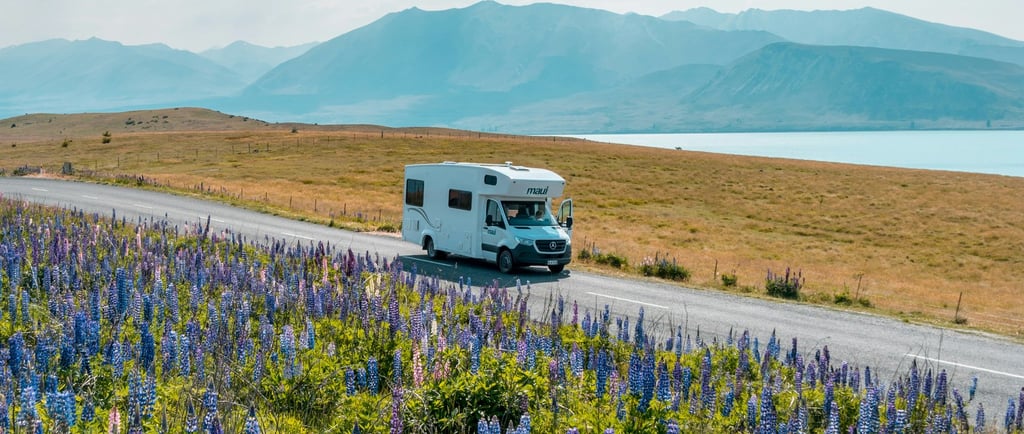How to Find the Best Free Campsites in the U.S. & Canada | Complete Boondocking & Dispersed Camping Guide
Discover how to find the best free campsites in the U.S. and Canada with our complete guide to boondocking, dispersed camping, and Crown Land camping. Learn top apps, websites, gear essentials, and safety tips to camp for free and enjoy unforgettable outdoor adventures.
ADVENTURE LIFESTYLE INSPIRATION
8/10/20253 min read


If you love camping but hate paying $30–$60 a night for a spot to park your tent or RV, you’re in luck—there’s a whole world of free camping out there. From serene lakeside clearings to wild forest hideaways, the U.S. and Canada are packed with free campsites that can rival the most expensive campgrounds.
In this guide, I’ll share the best tools, tips, and resources to help you find these hidden gems—and make the most of your free camping adventures.
1. Understand the Different Types of Free Camping
Before you start your search, it’s important to know the terms people use for “free camping” so you can find what you’re looking for.
Dispersed Camping – Camping outside of designated campgrounds, typically on public lands (U.S. Forest Service, Bureau of Land Management, Crown Land in Canada).
Boondocking – Camping without hookups, usually in an RV or van, often in remote areas.
Stealth Camping – Overnighting in urban or suburban areas without drawing attention (often in vans or cars).
Wild Camping – Off-grid camping in nature, often requiring you to be completely self-sufficient.
2. Use the Best Free Campsite Apps & Websites
Thanks to technology, you don’t have to wander around hoping to stumble upon a good site. Here are some of my go-to resources:
iOverlander – Community-generated map of campsites, from remote forest clearings to roadside pull-offs.
FreeCampsites.net – Great for finding hidden spots near your route.
Campendium – Includes reviews, photos, and cell service info for RVers and vanlifers.
The Dyrt Free Camping Filter – Useful if you already have the paid pro version, which lets you download maps offline.
USFS & BLM Maps – Direct source for official dispersed camping areas.
3. Know the Rules (and How to Stay Legal)
Free camping is a privilege, and rules can change depending on where you’re staying.
Stay Limits – Many public lands have a 14-day limit.
Leave No Trace – Pack it in, pack it out—leave it cleaner than you found it.
Fires & Cooking – Check local fire bans before lighting anything.
Wildlife Safety – Store food properly to avoid unwanted visitors.
💡 Tip: Always double-check the current regulations before you camp. Local ranger stations can be surprisingly helpful.
4. Gear You’ll Need for Free Camping
When you camp without amenities, the right gear can make the difference between an amazing night under the stars and a miserable one.
Here are a few essentials I recommend:
Portable Power Station – I use the Jackery Explorer 500 for keeping lights, phones, and even my laptop running.
Reliable Tent or Shelter – The Kelty Dirt Motel Tent is light, durable, and easy to set up anywhere.
Camping Stove – My go-to is the Jetboil Genesis Basecamp Stove for quick, efficient cooking in the wild.
Water Filtration System – The Sawyer Squeeze is a lifesaver when camping far from services.
LED Camping Lantern – I’ve been loving the Lepro LE Rechargeable Lantern for bright, adjustable light without eating batteries.
5. Finding Free Camping in the U.S.
Here are a few U.S. regions known for excellent free camping:
Southwest Deserts – Arizona, Utah, and New Mexico have tons of BLM land.
Pacific Northwest Forests – Washington and Oregon’s national forests are loaded with quiet pull-outs and riverside spots.
Rocky Mountains – Colorado, Montana, and Wyoming have gorgeous high-altitude sites with mountain views.
6. Finding Free Camping in Canada
In Canada, free camping often falls under “Crown Land” use. Each province has different rules.
British Columbia – Many Forest Service Recreation Sites are free or low-cost.
Alberta – Crown Land camping is allowed for Canadian residents in many areas.
Ontario & Quebec – Backcountry sites in provincial parks can be free outside peak season.
💡 Pro Tip: Use provincial government websites to check Crown Land maps before heading out.
7. Safety Tips for Free Camping
Always let someone know where you are.
Have an offline map ready in case of no signal (I use Gaia GPS).
Park with a quick exit route in case of weather or wildlife issues.
Carry extra water, food, and first aid supplies.
Final Thoughts
Finding the best free campsites in the U.S. and Canada isn’t hard when you know where to look. With the right tools, gear, and a little bit of adventure spirit, you can enjoy incredible nights under the stars—without spending a dime on lodging.
If you’re ready to start your free camping journey, make sure you’ve got the right camping gear essentials and keep this guide handy for your next road trip.
Explore
Trailside Stories shares honest reviews, tips, and stories from our outdoor camping and hiking adventures in our Mercedes camper van. Some links on this site are affiliate links, meaning we may earn a small commission at no extra cost to you. We only recommend products we personally use and trust.
Journey
© 2025. All rights reserved.
